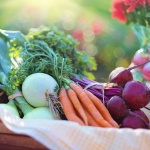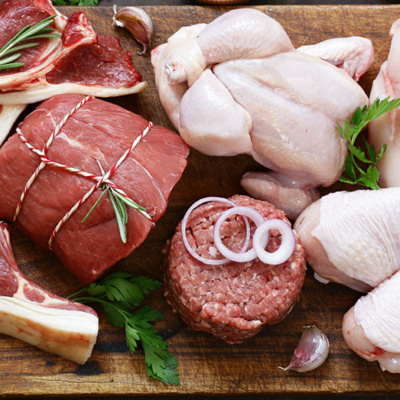Top of mind news
- Leasing Nightmares: Preventing the Dreaded Radius Restriction from Impacting Future Growth
- 13 Delightful Christmas Foods and Traditions Around the World
- Successful Restaurants Begin with a 5-Star Lease
- What Restaurants Need This Holiday
- Digital or Key Tag – Loyalty Programs for Every Preference
the farm
Poultry
 Following an aggressive run throughout the front half of 2018, chick placements have slowed into late year. Languishing prices have led to depressed integrator margins, leaving expectations for early 2019 chicken production to run as much as 3% below a year ago. Seasonally, placements rise from mid-November into late-December, but this year’s placements are only modest which should provide broiler price support. Breast meat prices remain historically low but have failed to break the flat-pricing cycle witnessed in early October. Chicken wing prices have edged higher as of late but are still 10% below a year ago. But, struggling wing prices appear to be presenting opportunities to lock in product at favorable levels.
Following an aggressive run throughout the front half of 2018, chick placements have slowed into late year. Languishing prices have led to depressed integrator margins, leaving expectations for early 2019 chicken production to run as much as 3% below a year ago. Seasonally, placements rise from mid-November into late-December, but this year’s placements are only modest which should provide broiler price support. Breast meat prices remain historically low but have failed to break the flat-pricing cycle witnessed in early October. Chicken wing prices have edged higher as of late but are still 10% below a year ago. But, struggling wing prices appear to be presenting opportunities to lock in product at favorable levels.
Beef
 Last week’s cattle harvest eased from the prior week but, at 654k head, was 4.1% larger than the year prior. Heading into the last few weeks of the year, carcass weights are expected to temper total production. Carcass grading remains exceptional. Prime grading posted a new all-time high at 11.03%. Since cattle were reportedly on feed for longer periods throughout 2018, higher quality grades and heavier placement weights will likely continue into 2019. As expected, retailers are in full holiday mode, featuring ribeyes and round roasts aggressively heading into Christmas. The grinds are likely to garner a modest boost next month, but history has shown that winter demand is usually sluggish.
Last week’s cattle harvest eased from the prior week but, at 654k head, was 4.1% larger than the year prior. Heading into the last few weeks of the year, carcass weights are expected to temper total production. Carcass grading remains exceptional. Prime grading posted a new all-time high at 11.03%. Since cattle were reportedly on feed for longer periods throughout 2018, higher quality grades and heavier placement weights will likely continue into 2019. As expected, retailers are in full holiday mode, featuring ribeyes and round roasts aggressively heading into Christmas. The grinds are likely to garner a modest boost next month, but history has shown that winter demand is usually sluggish.
Pork
 Last week’s hog slaughter was estimated at 2.61 million head, the second largest weekly kill ever. Despite expanded production schedules, pork prices have fared well throughout the week. Retail ads for holiday hams were disappointing, at best, as retail ham features were down 27% vs. 2017, but the feature price was nearly 7% over year ago. Perhaps retailers are waiting until this weekend to break big ads ahead of two back-to-back holiday weeks. During Q1, hog slaughter is likely to slow, but production is still expected to increase 3% year-over-year.
Last week’s hog slaughter was estimated at 2.61 million head, the second largest weekly kill ever. Despite expanded production schedules, pork prices have fared well throughout the week. Retail ads for holiday hams were disappointing, at best, as retail ham features were down 27% vs. 2017, but the feature price was nearly 7% over year ago. Perhaps retailers are waiting until this weekend to break big ads ahead of two back-to-back holiday weeks. During Q1, hog slaughter is likely to slow, but production is still expected to increase 3% year-over-year.
The sea
Seafood
 Salmon prices are modestly above 2017 levels. This is despite solid imports. During October, the U.S. imported 8.9% more salmon than the previous year. The elevated U.S. dollar value is expected to continue to encourage solid salmon imports during the next several months. This factor could cause salmon prices to fall below year ago levels later in 2019.
Salmon prices are modestly above 2017 levels. This is despite solid imports. During October, the U.S. imported 8.9% more salmon than the previous year. The elevated U.S. dollar value is expected to continue to encourage solid salmon imports during the next several months. This factor could cause salmon prices to fall below year ago levels later in 2019.
The garden
Produce
 The lettuce markets are starting to back off. The iceberg lettuce harvest has been strong which is encouraging shipments. Iceberg lettuce shipments last week rose 7.7% from the prior week and were 22.6% bigger than the same week last year. Romaine shipments remain subpar as they were down 9% last week from the prior year. The risk in the lettuce markets remains to the downside in the near term. Tomato prices remain inflated. History suggests that lower tomato prices are likely to occur during January.
The lettuce markets are starting to back off. The iceberg lettuce harvest has been strong which is encouraging shipments. Iceberg lettuce shipments last week rose 7.7% from the prior week and were 22.6% bigger than the same week last year. Romaine shipments remain subpar as they were down 9% last week from the prior year. The risk in the lettuce markets remains to the downside in the near term. Tomato prices remain inflated. History suggests that lower tomato prices are likely to occur during January.
The kitchen sink
Dairy
 The cheese markets have found some support over the last week. CME Class IV milk futures have risen notably and are now carrying a premium over their equivalent Class III milk futures through at least next year. This encourages milk supplies to go to butter manufacturing instead of cheese production. It’s likely that the cheese markets are near (or already have set) a long-term bottom. The spot butter market has been seasonally declining this month due in part to fulfilled holiday orders. Since 2015, the average move for the spot butter market during this week and next was down 9.9%.
The cheese markets have found some support over the last week. CME Class IV milk futures have risen notably and are now carrying a premium over their equivalent Class III milk futures through at least next year. This encourages milk supplies to go to butter manufacturing instead of cheese production. It’s likely that the cheese markets are near (or already have set) a long-term bottom. The spot butter market has been seasonally declining this month due in part to fulfilled holiday orders. Since 2015, the average move for the spot butter market during this week and next was down 9.9%.
Grains
 The soybean markets continue to track well below year ago levels. New soybean export sale tenders to China have been announced during the last week with promises for more. But the world and U.S. soybean supplies are projected to remain ample. This could temper the upside risk in the soybean complex this winter.
The soybean markets continue to track well below year ago levels. New soybean export sale tenders to China have been announced during the last week with promises for more. But the world and U.S. soybean supplies are projected to remain ample. This could temper the upside risk in the soybean complex this winter.
Oil
 The EIA’s most recent weekly national average retail gasoline price was $2.460 per gallon, the cheapest since July 2017 and 4.2% less than a year ago. However, the downside potential for gasoline prices from here may be limited.
The EIA’s most recent weekly national average retail gasoline price was $2.460 per gallon, the cheapest since July 2017 and 4.2% less than a year ago. However, the downside potential for gasoline prices from here may be limited.





